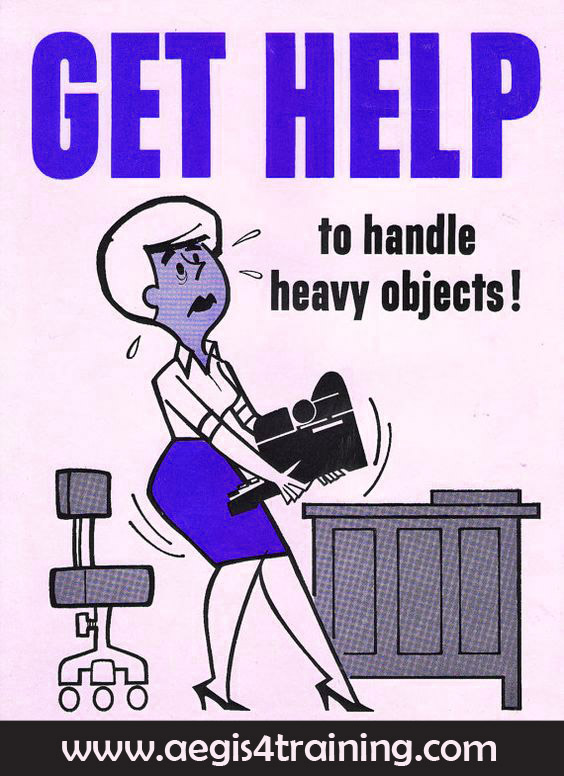
In effect, any activity that involves an individual to lift, move or support a load, will be classified as a manual handling task.
—————-
In the UK, 1.1m people reported that they suffered from musculoskeletal disorders (MSDs) caused, or made worse, by work. It is estimated 12.3m working days are lost annually due to work-related MSDs.
More than a third of all reportable injuries of over three days involve manual handling, and around 10% of major injuries are linked to manual handling. It has a major impact on all workplaces, and costs the economy hundreds of millions of pounds every year.
Anyone involved in the moving and handling of goods and people could be at risk. Injuries and suffering can be linked to any work involving handling of loads. There are risks in handling even light loads if a repetitive task is being carried out in poor conditions. Poor ergonomics and workplace layout are a factor in many hazardous manual handling tasks.
Risks can be found in all work sectors, but healthcare, agriculture and construction are recognised as high-risk industries due to the number and nature of the manual handling activities.
————
The Manual Handling Operations Regulations These Regulations state that employers should adopt a hierarchy of control measures:
- to assess any hazardous Manual Handling Operation that cannot be avoided
- to prevent hazardous Manual Handling Operations so far as is reasonably practicable
- to minimize the risk of injury so far as is reasonably practicable.
——-
One way to assess manual handling activities is to look at four specific areas – Task, Individual, Load and Environment (easily remembered by the acronym TILE).
As with any assessment, the workforce should be involved in the process, and use should be made of any relevant guidance available for particular industries.
Key factors to consider in each element are:
- The Task Does the activity involve twisting, stooping, bending, excessive travel, pushing, pulling or precise positioning of the load, sudden movement, inadequate rest or recovery periods, team handling or seated work?
- The Individual Does the individual require unusual strength or height for the activity, are they pregnant, disabled or suffering from a health problem. Is specialist knowledge or training required?
- The Load Is the load heavy, unwieldy, difficult to grasp, sharp, hot, cold, difficult to grip, are the contents likely to move or shift?
- The Environment Are there space constraints, uneven, slippery or unstable floors, variations in floor levels, extremely hot, cold or humid conditions, poor lighting, poor ventilation, gusty winds, clothing or Personal Protective Equipment that restricts movement?
——-
As with any other risk, if you can eliminate or avoid the risks from manual handling, this is by far the best option. You should try to remove as many of the constraints as possible to minimise the risks to as low a level as reasonably practicable. Â Look at how the task can be fitted to the individual.
Take into consideration whether mechanical handling aids could be used, this could range from a simple trolley or sack truck to more sophisticated aids such as conveyors or fork lift trucks.
If you cannot take away or mechanise the manual handling tasks, you must carry out a risk assessment where the task could present a risk of injury. You need to look at ways to reduce the risks to as low a level as reasonably practicable.
FOR MORE INFO VISIT MY WEBSITE!
Â

 Manual handling untoward incidents reached for more than a third of all accidents reported each year to the enforcing authorities. It is estimated that in excess of 500,000 people in Great Britain suffer from a musculoskeletal disorder (MSD) mainly affecting the upper limbs or neck that was caused, or made worse, by their present or previous work.
Manual handling untoward incidents reached for more than a third of all accidents reported each year to the enforcing authorities. It is estimated that in excess of 500,000 people in Great Britain suffer from a musculoskeletal disorder (MSD) mainly affecting the upper limbs or neck that was caused, or made worse, by their present or previous work.